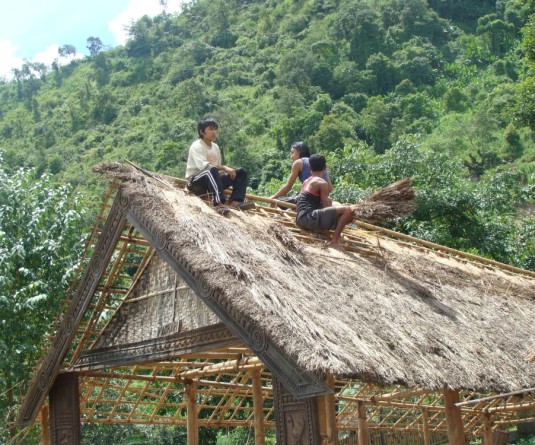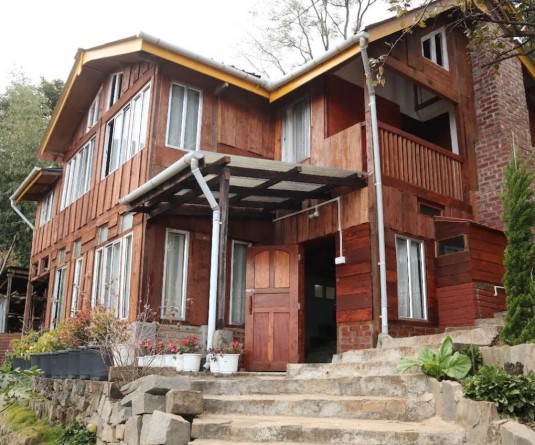‘Yakang’ morung, the site of the first Yachem village morung reported to have been built long before the Ahom king Sukhapa set foot on Naga soil in the first half of the 13th century.
Ashikho Pfuzhe
Morung Express Feature
Longleng | April 9
Like many Naga villages, one of the more progressive villages in Phom land makes a conscious effort to maintain link with its past through the ‘morung’ - the seat of learning of Naga forefathers.
Yachem village, the “biggest village” in Longleng district with around 1000 households has four morungs - Yakang, Noksosang, Yangkhen and Mokho Alicho - each morung revealing valuable aspects of the old Naga way of life.
‘Yakang’ morung is the site of the original morung in Yachem village, which is reported to have been built long before the Ahom king Sukhapa set foot on Naga soil in the first half of the 13th century.
Villagers quoting British sources said the original Yachem village morung was one of the biggest morungs in Naga Hills during that time and it had five fire centres to train young men the art of war and living. Here, youths learnt warfare skills, how to make daos, guns and spears, weave baskets and agricultural techniques.
The morung also holds a dark secret: more than 1000 human skulls from the head-hunting days lay buried beneath the floor of the morung. A couple of skulls wrapped in a polythene bag are hung on the walls of the morung for visitors to see; a grim reminder of Ursula Graham Bower’s description of the Naga hills as the “paradise of headhunters.”
84-year-old Moikum, the head ‘barrick’ (village chieftain or head GB) of Yachem village said as late as 1976, the skulls were hung outside the houses of warriors as decorations.
But after Christianity came to the village in 1976, the villagers decided to bury the symbols of a violent past and embrace the new religion that advocated peace.
All villagers are now Christians and united under the Baptist denomination.
‘Yakang’ morung still retains some of the wooden sculptures and carvings of the original morung. When asked what the figure of a tiger in one of the original carvings signified, Moikum said the tiger symbolizes strength and agility, the qualities of a warrior. “When the morung was being constructed for the first time hundreds of years ago, it was reported that a tigress too came to the morung and gave birth to cubs there. This was a good omen for the villagers,” the village chief said.
The head ‘barrick’ is revered by all villagers and has still considerable clout in the affairs of the village but unlike the Konyak ‘anghs’, he is permitted to take only one wife.
Of the 11 clans in the village, the chieftain is chosen from among three clans- Avanoho, Makiong and Mokho- with the present chieftain from the Avanoho clan. His would-be successor Sangti is from Makiong clan.
According to elders, Yachem was once a sentinel village of the Phoms populated by warriors and the village was also attacked twice by the Britishers. At the upper edge of the village is a strategic area with three giant banyan trees, which in olden times served as burial site as well as dumping point of enemy scalps.
The village has buried the head-hunting past along with the skulls and treading the path of modernity and many Yachem youths have left the village to pursue higher studies and careers. Even the area where three giant trees stand is now converted to a park.
But when they come home, the morungs remind them of their roots and proud history.






